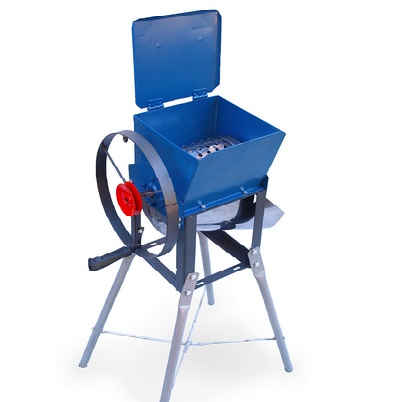How to Create Warm Beds for Cucumbers
To properly create warm beds for cucumbers in your garden, you will need materials such as branches, logs, compost, leaves, or mown grass, and boards. Follow the instructions below to easily make warm beds for cucumbers.
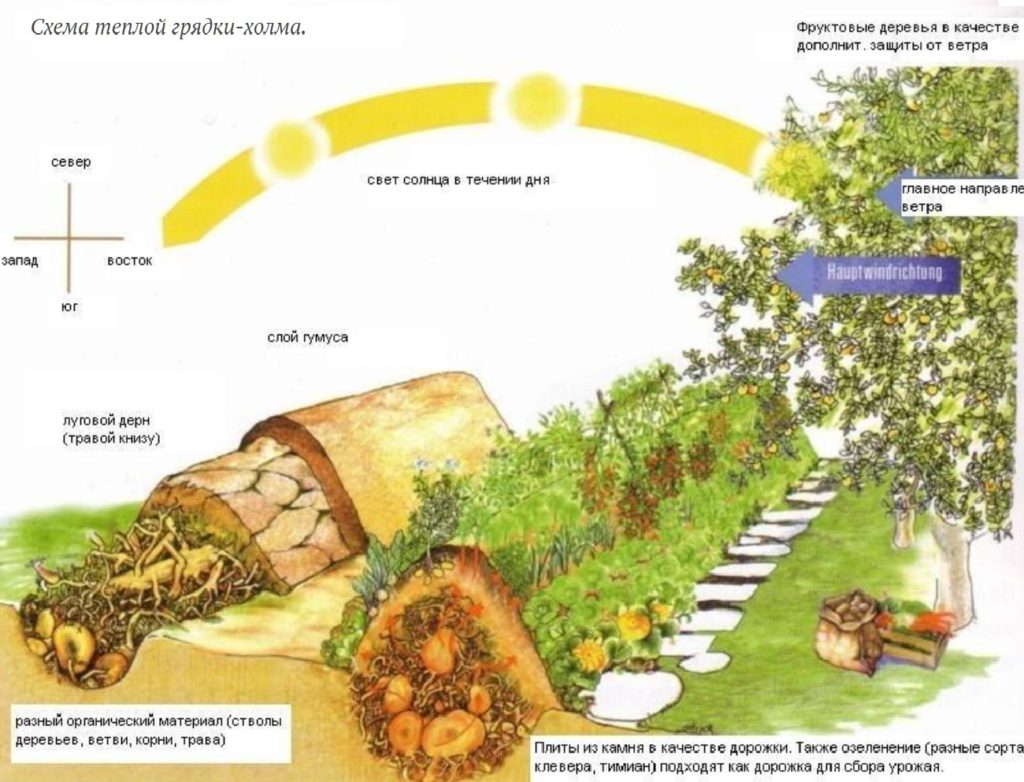
- Choose a location for the bed that receives the maximum possible amount of sunlight. Cucumbers love warmth and light.
- Determine the dimensions of the bed and mark it out. The width of the bed should be about 1.2-1.5 meters, and the length depends on how many cucumbers you want to grow, typically around 5 meters.
- Prepare the bed: remove all weeds, stones, and other obstacles to allow free root growth.
- Dig a trench 50 cm deep and 1.2-1.5 meters wide, fill the bottom with old branches, logs, and leaves – they will decompose and generate heat.
- On top of the branches, place a layer of leaves, straw, hay, or grass about 10-15 cm thick.
- Over the leaves, add compost or manure mixed with soil in a 1:1 ratio, to a depth of 10 cm.
- Plant cucumbers in the bed. Ensure enough space between plants, about 50 cm, to avoid overcrowding.
- Cover the bed with agricultural fabric to retain warmth and reduce the risk of weeds.
- After the first shoots of cucumbers appear, provide supports for them to grow vertically, such as vertical nets or sticks.
- Regularly water the cucumbers and monitor the soil moisture to keep it moist but not overly wet.
- Harvest cucumbers as they mature to prevent overripening and spoilage.
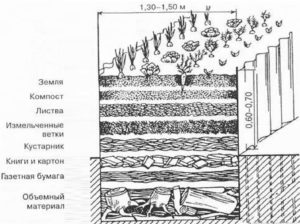
What to Put at the Bottom of a Warm Bed?
Several layers of different materials can be placed at the bottom of a warm bed to help retain heat in the soil and improve its drainage properties:
- The first layer – coarse material. You can use branches, stumps, large gravel, or stones to create ventilation channels and improve drainage.
- The second layer – medium material. For example, straw, sawdust, leaves, pine needles, or similar materials will help retain heat in the bed and improve drainage.
- The third layer – compost. This layer can be covered with various organic wastes such as fruit and vegetable scraps, leaves, grass, etc. Compost enriches the soil with beneficial microorganisms, improves its structure, and provides essential nutrients to plants.
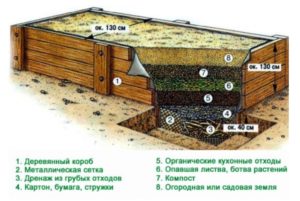
- The fourth layer – sand. A thin layer of sand over the compost helps create a loose surface and improves the drainage of the bed.
- The fifth layer – soil. This layer can be covered with fertile soil or a mix of soil and compost for plant cultivation.
- After adding all layers, tamp down the bed well to create an even surface and lay a thermal insulation material (e.g., agricultural fabric) over the bed.
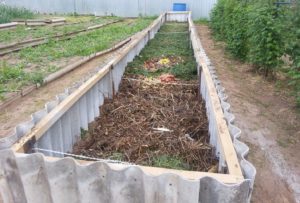
When and How to Water Cucumbers?
Cucumbers require regular and proper watering for good growth and yield. Here are some recommendations for watering cucumbers:
- Frequency of watering. Cucumbers need to be watered regularly, especially during growth and flowering periods. In hot weather, they may need daily watering, while in cooler weather, every 2-3 days is sufficient. Avoid overwatering, as excess moisture can lead to root rot and other problems.
- Amount of water. Cucumbers need enough water to absorb nutrients from the soil. Typically, 1-1.5 liters of water per plant is sufficient, depending on the size of the plant and weather conditions.
- Timing of watering. The best time to water cucumbers is early morning or late evening, when the sun has set and there are no direct rays. This allows the water to penetrate deeper into the soil and reduces the chance of leaf burn from the sun.
- Watering technique. It’s best to water cucumbers at the root, avoiding getting water on the leaves, which can lead to diseases and burns. A watering can or hose with a nozzle can be used for watering.
- Quality of water. Cucumbers need clean and soft water. Hard water can cause soil problems, leading to a decrease in yield.
Ensure that cucumbers have enough moisture, but do not overwater the soil. Water the plants regularly and properly for healthy growth and abundant yield.
How to Accelerate Cucumber Fruiting?
If you want to accelerate the fruiting of cucumbers, there are several actions that can help:
- Select the right variety of cucumbers. Some cucumber varieties have a shorter growth period and can start fruiting faster than others. When choosing a variety, pay attention to its description and manufacturer’s recommendations.
- Create conditions for early planting. If you are growing cucumbers in open ground, you can accelerate fruiting by starting to grow them earlier than when the soil has sufficiently warmed up. You can use covers such as greenhouses or hoop houses to warm the soil and speed up plant growth.
- Fertilize the plants. For active growth and development, cucumbers need nutrients. Fertilize the plants regularly using fertilizers containing nitrogen, phosphorus, and potassium.
- Provide regular watering. Plants need sufficient water to accelerate growth and fruiting. Regularly water the plants, especially during dry weather.
- Conduct pruning and training. Proper pruning and training of plants can accelerate fruiting by removing side shoots and excess leaves that can slow down plant growth and fruit development.
- Ensure pollination. Cucumbers need pollination to start forming fruits. If you are growing cucumbers in a greenhouse or indoors, you can use artificial pollination to speed up this process.
With proper care and attention to the needs of the plants, cucumbers can start fruiting faster, allowing you to enjoy fresh vegetables sooner.

